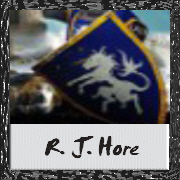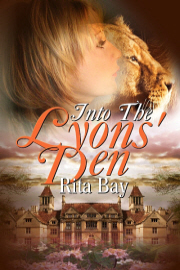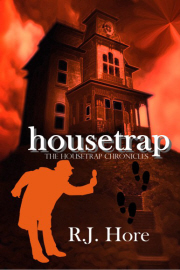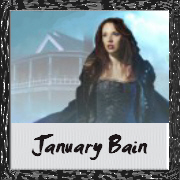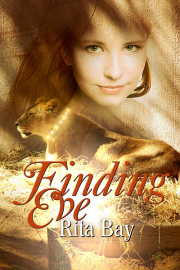Today’s post is an article by, and interview with R. Ann Siracusa, author of All In The Game. The premise sounds fantastic, but first a few words of advice on building a world. Take it away, Ann.

SO, YOU WANT TO BUILD A NEW BRAVE WORLD
“Naw. I write contemporary. I don’t need to world build.”
Even though most people define world building as the construction of an imaginary world, all writers deal with world building. It’s a necessity if a writer hopes to produce a novel, in any genre, that is consistent, real, and believable.
Establishing the setting of a novel is a form of world building. The difference is that novels set in contemporary times and in familiar places don’t require as much time, research, or as many words. A writer often sets the stage in a few words or sentences. That’s all the reader needs to understand where and when the novel takes place, how people dress and act, and the laws of physics that apply. The reader can rely on what he/she knows of that time and place and the planet we live on.
But despite the advancements in communication, the world is still a big place. Even though we all have many things in common, such as cell phones and automobiles, there are still differences–accents, language, customs, dress, food, climate, housing–just to name a few. Even if your novel is contemporary, you need to pinpoint those things that are different about the particular setting. But there are no big surprises.
And isn’t writing a historical about rebuilding the world that existed in a specific time and place on earth? More differences will exist, and you can’t have a Roman soldier wearing a wrist watch or using modern slang; but still, no big surprises.
So, contemporary and historical require some world building, but you can always count on one moon in the sky, gravity, rotation of the earth around the sun, ocean tides, and human nature. The laws of physics are the laws of physics, even in a time when they weren’t understood.
 WHEN ALL BETS ARE OFF
WHEN ALL BETS ARE OFF
When a writer takes on science fiction or fantasy, all bets are off. These genres take more time, research, and words to create a world that the reader understands.
“Why do I need research? This is fantasy. I can make up what I want.”
Right…but not totally right. The key to world building is making your story believable. Even though the author is writing the rules of this new world, there still have to be rules…and the author has to follow them. And as the author, you have to know, at least generally, those rules that exist in our universe in order to decide which of them you’re going to break when you create the new one.
 HOW TO CREATE YOUR WORLD
HOW TO CREATE YOUR WORLD
Author Holly Lisle suggests there are three varieties of writers in relation to world building for fantasy and science fiction genres.
“Those who really have no idea what world building is or why they should bother with it.”
“Those who do know, but figure they’ll wing the details as they go.” and
“Those obsessive folks who secretly believe that they can’t start a book until the whole planet is in place.”
My preference and the general recommendation of most of the writers on this subject is: Don’t do too much at the beginning. Focus on putting the big ticket items (the core principles, as Victoria Strauss puts it) in place and develop a solid concept, then deal with the more detailed issues when they come up. Deal only with the parts of the world you need for the plot of your story.
● Develop a well-thought-out concept of your world.
To get the fantasy alive in the minds of readers so they can visualize it, it has to come alive in the writer’s mind. It has to feel tangible and real to the writer before it can be tangible and real to the reader. There are tricks to do that, including drawing maps of the world and figuring out the geography, for certain types of novels.
● Develop the Core Principles.
● Anchor the world with humanity and things human that the reader knows.
Even if this is a Star Wars type world not based on humanity or our universe, your readers are human. Where is doesn’t matter to the storyline, ground the story in earth, humanity or things that readers are familiar with, like an equivalent for coffee, booze, or expected human reactions.
An example given by A. Wrighton is that in the movie Star Wars, which is not related in history or development to earth, still has a senate. People know what a senate is. You could call it a derfloppengut, but senate works just fine. Don’t make the world any more complicated than necessary.
● Don’t overwhelm the reader with too much
Don’t explain everything up front in the first chapter. And, of course, the author should show the reader, rather than explain.
● Establish the basic rules and make the limitations seem real
Because fantasy and science fiction ask the reader to suspend their beliefs, the work needs to be consistent internally or the reader loses faith in the author. Like any novel, something can change…but only if there is a credible reason. Most readers will spot the inconsistencies and be jarred out of the story.
● Know history, ours and that of the imaginary world
Is any part of the story based on real history, or is this an alternate world? A fantasy with magic in it could easily be set on the earth and be subject to real history…or it could be on earth, but with a completely different history. If you are using real historical events, they better be correct within the rules of the new world. And, of course, the rules need to be clear.
You don’t have to overdo it at the beginning and know everything about the world, but do your prep work, or you can paint yourself into a corner with no way out that doesn’t break the rules of your new world.
Rebecca Zanetti lists the following five blunders in world building:
“● Making the world faaar too complex right at the beginning
Avoid trying to explain everything up front in a information dump.”
“● Forgetting to look ahead and giving all the rules in book one, leaving no wiggle room in the next book.”
“● Forgetting even the characters may be new to the world and should react believably to the strange new world.“
“● Forgetting to relate the world to the one the readers live in.
Even paranormal creatures need humanistic flaws, goals, weaknesses. Give the readers something to hold on to that they understand.”
“● Holding ourselves back and not putting bizarre ideas out there.”
Rebecca says she writes every scene like she’s the only person who is ever going to read it.
A FEW WORDS ABOUT WORDS 
Not only can you create your own species, strange sentient life forms, and wild beasts that fly, you can also create a language or languages to be spoken in this new universe. But be careful. The people who read your work are going to speak English (or another earth language). They won’t want to learn a whole new one, which most of us aren’t capable of creating anyway, just to read your fantasy novel.
Tip the reader off that the characters are speaking another language, but use made-up, new-universe words sparingly, just as you would to give the flavor of a foreign language or an accent without making the dialogue unreadable. Here’s a line from my sci-fi romance All In The Game:
The voice sounded familiar. So did the language, but not the English Shauna knew. A strange, stilted dialect. Yet, she understood perfectly.
An A. Wrighton example of the same thing.
Dref rubbed his antennae and sighed. He looked at his mother and spoke to her in their native Huvlovian tongue, the only way he knew how – while whining.
I would suggest limiting the number of words in your new or futuristic language, and explaining them (preferably, showing the reader what they refer to) the first time used. After that, the reader has to remember. Or you can put in a glossary of words at the back.
Just put this issue on your radar screen.
 MY FANTASY WORLD – ALL IN THE GAME
MY FANTASY WORLD – ALL IN THE GAME
● What makes your fantasy world different from ours?
The fantasy world in my science fiction romance All In The Game is different from our real world in a slightly different way than a novel crafted to be set in a paranormal or futuristic world.
The novel is set in contemporary San Diego, CA, with nothing paranormal about it. In this totally real setting, a contemporary romance writer is helping a computer-game nerd design a computer game to appeal to the women’s market…but, she finds out later, the computer nerd (who isn’t that nerdy, after all) is a real physicist doing research, which combines the latest artificial intelligence and virtual reality technologies, for NASA. The computer game itself is set in a futuristic world which has been programmed by a contemporary human with an imagination, but also with personal issues and limitations due to his age and lack of experience.
The hero and heroine (the physicist and the writer) become physically trapped in the game and have to play it from the inside as the game characters. To get back to their own reality, they must work cooperatively to win the game…a daunting task when they find themselves as leaders on opposite sides of a military conflict, not to mention dealing with an artificial intelligent unit, which has a crush on the heroine and a different agenda.
● What inspired this book?
I’m not sure. For years I’ve had the idea kicking around in my brain: two people being caught up in a computer game. At the time, I’d never heard of the movie Tron, but after I finished writing the book and was explaining it to other writers, someone said, “Oh, sort of like the movie Tron.”
Well, darn! I still haven’t seen the movie, so I don’t know if it’s similar or not.
● Are your characters human? What talents do they have?
The hero and heroine are humans who have been sucked into a computer game world. The other characters are game characters developed as part of the computer game…except they don’t know that, of course. Some are quite incomplete, others one dimensional. The hero and heroine share the same bodies with the major game characters, so they have access to the game characters’ memories and skills, but they have no superhuman powers.
But the artificial intelligence unit controlling the game…well, that’s another matter. Of course, it’s not human, right?
● Is this part of a series?
No. At least I didn’t plan a series. It might be interesting, though, to see where the game characters would go on their own.
● Excerpt?
In this excerpt, the hero and heroine are doing a trial run of the partially designed computer game in a simulator.
Okay. Here goes. I lowered the stereoscopic eyepiece.
Awesome! Now it seemed as though I huddled on the cliff. Cool moist air dampened my cheeks. I put down one hand to balance myself on the soft ground, and dirt, and wet grass stuck to my palm.
As I watched the shoreline, flat, sleek submarine tanks forced their way to the surface of the sea like huge alligators, and then sprouted wheels and glided onto the beach. The low rumble of their engines hummed in my ears, and the ground vibrated.
This virtual reality technology is amazing.
Unexpectedly, my eyepiece filled with jagged blue lights slashing back and forth across my line of vision. “Oh!”
Before the cry of surprise left of my mouth, the blue lightning dimmed into wiggly lines of static. After that, everything turned gray.
Staring into the colorless fog, I shifted in the seat. “Don, did you see that? Everything flashed blue and my eyepiece went blank.”
Don’s voice came from beside me, not through the helmet speakers. “I saw it, but that’s not part of the game. There must be a malfunction somewhere.”
I reached up to lift the eyepiece and stopped. “No, wait. My picture’s coming back. I think—”
Zing. A projectile skimmed through the air inches above my head.
“Yikes.” I tried to throw myself prone, but something wedged against my side kept me from dropping. The arm of the seat. Between the sounds of laser fire and distance cries, I still heard the faint grinding of the simulator’s air conditioner. “Don?”
“I’m right next to you.” He patted my arm, but his voice sounded unsteady. Not reassuring in the least. “There’s something strange going on. I don’t know what.”
Smoke burned my eyes, making them water, and clogged my chest. I coughed.
Zing. Zing. More bolts of pure energy whizzed past, so close they seemed to disturb the air and ruffle my hair. Unable to feel Don’s hand anymore, I hunkered lower.
“This is too real.”
Another explosion threw me to the ground, the impact forcing the air out of my lungs. I collapsed face down in the wet grass. Red spots danced in my eyes. Adrenaline tingled through my body. Ugh. I spit out a bug.
Warning bells sounded in my head. Danger. Danger. I have to get out of here.
I scrambled to my feet, then ran, moving from bush to tree to rock, taking cover wherever I could. The weight of my body armor slowed me, my boots stuck in the soft earth and sucked me down. I felt like a sitting duck. A target. The lightweight assault weapons I carried were no match against lasers, sonic blasters, and plasma cannons.
As I dodged between trees and brush, a hand shot out of nowhere and grabbed my ankle.
“Eek!” Shrieking, I plunged into a trench and slid to the bottom on my butt.
“Shh. You’ll give us away,” Don whispered. “This isn’t the way I programmed the game. I need some time to figure it out what’s wrong.”
“Don?” I blinked my eyes, and my jaw slackened into flycatcher mode for a moment. The man beside me had to be Don, but he looked…different. With his hair buzzed, his face seemed leaner, more masculine, the stubbornness and strength in his jaw more prominent. In the camouflage uniform, he looked muscular and strong. And no thick glasses.
This was Dangerous Don, the-Delicious-and-Dreamy. The game character. But he seemed so real. I touched his hand.
Warm textured flesh. He was real.
I jerked my hand away and hollered. “What the hell is going on?”
“I don’t know. But you don’t have to shout.”
His voice sounded the same. Cool, analytical, and distant, as though he was lost in thought. Still all genius, all physicist. Deeper in tone, perhaps, but Don’s voice without a doubt.
I shook my head to clear it. Where am I? Who am I? My heart thumped against my rib cage like a trapped bird. Shauna. I’m Shauna.
But which Shauna?
● Buy Links for All In The Game
Breathless Press Buy Link
Amazon Buy Link
Barnes & Noble Buy Link
All Romance E-Books Buy Link
Reader Store Buy Link
BookStrand Buy Link
● Social Media Links for R. Ann Siracusa. (I’d love to hear from you.)
URL/Website: http://www.rannsiracusa.com/blog
Facebook: http://www.facebook.com/ann.siracusa?ref=ts
Twitter: https://twitter.com/#!/AnnSiracusa
Google Plus: https://plus.google.com/105467292422978603982/posts
Goodreads: http://www.goodreads.com/author/show/2993012.R_Ann_Siracusa
Pinterest: http://pinterest.com/rannsiracusa/
Resources for World Building
http://awrighton.com/2013/03/14/world-building-for-fantasy-sci-fi-writers/
http://rebeccazanetti.com/writing-craft/five-blunders-authors-make-in-world-building/
http://www.stormthecastle.com/mainpages/for_writers/worldbuilding.htm
http://www.victoriastrauss.com/advice/world-building/
https://en.wikipedia.org/wiki/Worldbuilding
http://hollylisle.com/how-much-of-my-world-do-i-build/
http://www.stormthecastle.com/mainpages/for_writers/how-to-write-an-epic-fantasy-novel.htm
http://www.sfwa.org/2009/08/fantasy-worldbuilding-questions/
http://www.lsswritingschool.com/WorldBuilding.html
http://www.cjbrightley.com/on-writing-and-publishing/world-building-for-fantasy-authors/
http://www.lisahartjes.com/tips-for-world-building-when-writing-fantasy-and-science-fiction/
http://www.blackholly.com/writingresources.html
http://sffworlds.wordpress.com/2013/05/22/world-building-for-writers-build-more-than-you-need/
https://worldsoftheimagination.wordpress.com/tag/world-building-for-writers/
http://referenceforwriters.tumblr.com/post/47088714715/worldbuilding
http://www.writersdigest.com/tip-of-the-day/discover-the-basic-elements-of-setting-in-a-story
Wow, Ann, thank you so much for joining us today. You’ve given us a ton of great info and a super-fun read to look forward to. Best of luck with All In The Game.







 WHEN ALL BETS ARE OFF
WHEN ALL BETS ARE OFF  HOW TO CREATE YOUR WORLD
HOW TO CREATE YOUR WORLD
 MY FANTASY WORLD – ALL IN THE GAME
MY FANTASY WORLD – ALL IN THE GAME


